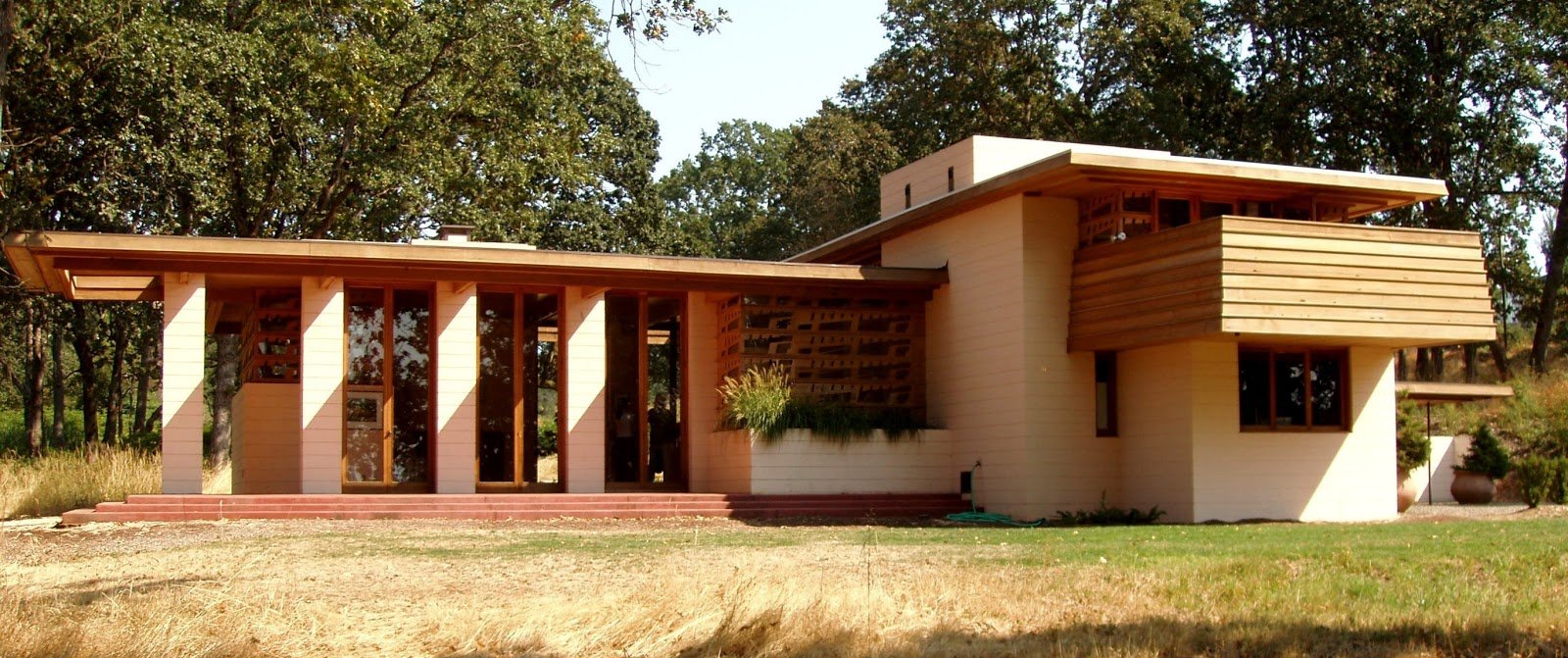#8520. Organic Modernism: Harmonious Facade with Horizontal Lines and Natural Textures
The image showcases an excellent example of organic modernist architecture, reminiscent of Frank Lloyd Wright's work. The house features characteristic horizontal lines, protruding eaves with wide overhangs, and a harmonious integration with the surrounding nature.
The facade is executed in warm earthy tones, emphasizing its connection to the natural landscape. Horizontal wooden panels on the upper part of the structure create a rhythmic pattern and add texture to the composition. The lower part is rendered in a lighter shade, visually lightening the construction. Particularly noteworthy is the play of light and shadow on the front facade, where vertical elements create a rhythmic pattern.
Large panoramic windows with wooden frames provide abundant natural light to the interior spaces and visually connect the interior with the exterior, which is a key principle of organic architecture. In the center of the facade, there's a decorative element resembling a perforated wall, adding individuality to the building.
The flat roof with projecting canopies is not only a characteristic element of modernist architecture but also provides additional protection from the sun, which is particularly relevant in hot climates. Clean-lined steps lead to the entrance group, emphasizing the horizontality of the entire composition.
When designing your own house, it's worth paying attention to techniques such as using horizontal lines to visually expand the space, integrating natural materials and textures, creating a dynamic facade through the play of light and shadow, and employing stepped volumes to create an interesting spatial composition.
